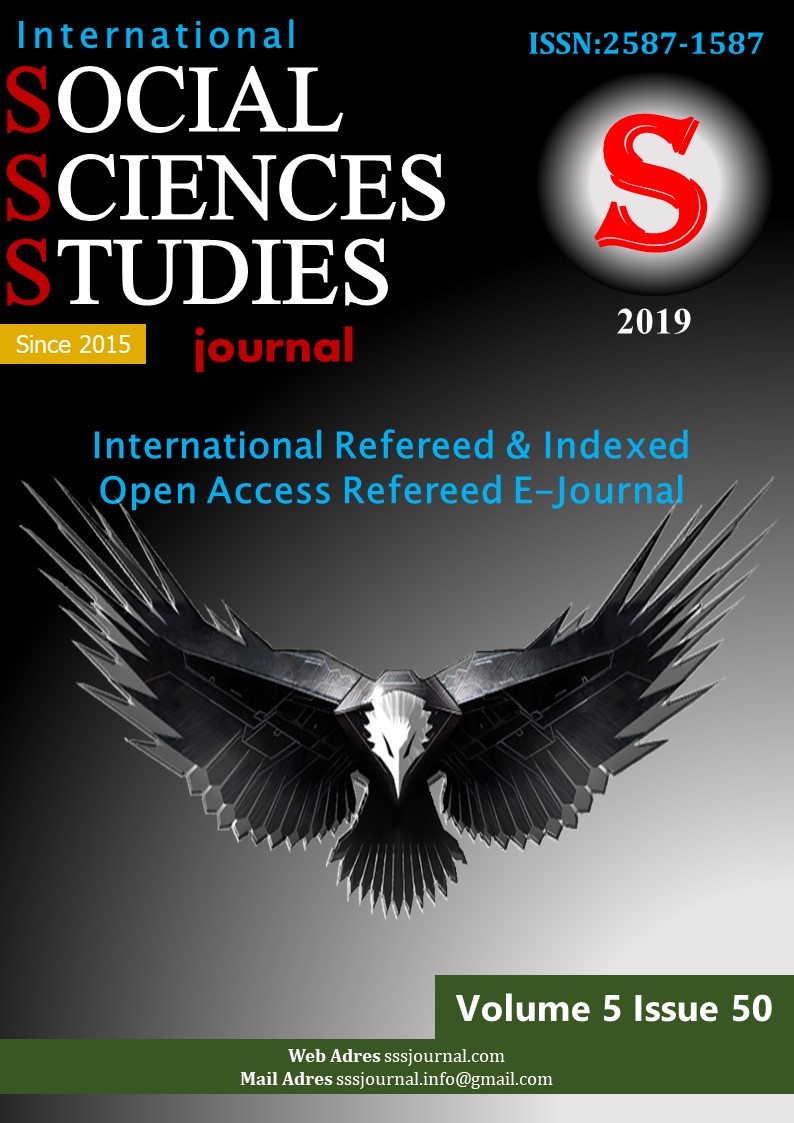Author :
Abstract
Anadolu’da resim sanatı kendi üslûbunu Osmanlı Döneminde Fatih Sultan Mehmet zamanında başlayan portre çizimleriyle belirlemeye çalışırken, II. Beyazid Döneminde farklı bir tarz ile harmanlanarak kazanmaya başlamış ve Nasuh El-Matrâkî’nin Sefer-i Irakeyn adlı eserindeki minyatürlerle manzara ve şehir tasvirleri çeşitli imge kalıplara ulaşmıştır (Arık,1976:4; Özbek,2014:216, Kılıç,2008:127, Renda,1977:29-31). Ancak mimariyi süsleme amacıyla kullanılması XVIII. yüzyıla kadar beklemiştir. Resim sanatında alışagelmiş İstanbul ve manzara tasvirleri, dönemin başkenti İstanbul başta olmak üzere Halep, Bağdat, Arnavutluk ve Makedonya gibi farklı birçok bölgede kullanılmıştır. Konut, cami, saray gibi yapıların kubbe eteklerini dolayan, baş odaların tavan geçişlerinde pano halindeki bezemeler için hayali mekânların kullanılmasından ziyade özellikle İstanbul, Mekke ve Medine tercih edilmiştir. Buna en erken örnek ise Topkapı Sarayı’nda yerini çoktan almıştır. İstanbul resimleri çoğunlukla kalem işi tekniğiyle duvarlara işlenmiştir. Safranbolu Yörük Köyü Sipahioğlu konağı baş odasında da bu teknik kullanılarak bir resim yapılmıştır. Konut ile ilgili çalışmalarda resim İstanbul manzarası olarak değerlendirilmiştir. Ancak İstanbul tasvirlerinde yer alan sembolik ögeler bu resimde bulunmamaktadır.
Keywords
Abstract
While the art of painting in Anatolia started to determine its own style with portrait drawings as of Fatih Sultan Mehmet in the Ottoman Period, it started to gain its value by blending with a different style during the Beyazid II. Period and various image patterns with the miniatures in Nasuh al-Matraki's work called Sefer-i Irakeyn were made through the depictions of landscape and cities obtained (Arık, 1976: 4; Özbek, 2014: 216, Kılıç, 2008: 127, Randa, 1977: 29-31). However, the use for the structural decoration purposes was not until the XVIII. Century. In the art of painting, the usual depictions of Istanbul and landscapes have been used in many different regions such as Istanbul, the capital of the period, Aleppo, Baghdad, Albania and Macedonia. Istanbul, Mecca and Medina were preferred rather than using imaginary spaces for the paneled decorations in the ceiling passages of the main rooms covering the dome footings of structures such as houses, mosques and palaces. The earliest example of this has already taken its place in Topkapı Palace. Istanbul paintings were mostly painted on the walls using hand-drawn technique. A painting was made using this technique in the main room of the Sipahioğlu Mansion in the Yörük Village of Safranbolu. In the studies related to housing, the painting was considered as the Istanbul landscape. However, the symbolic elements in the depictions of Istanbul were not found in this picture.
Keywords
- Arık, R. (1976). Batılılaşma Dönemi Anadolu Tasvir Sanatı. (1. Baskı). Türkiye İş Bankası Kültür
- Arık, R. (1976). Batılılaşma Dönemi Anadolu Tasvir Sanatı. (1. Baskı). Türkiye İş Bankası Kültür Yayınları. Ankara.
- Beyazıt, N. (2014). Safranbolu Evleri Plan Tipolojisi ve Kullanıcı İhtiyaçları Hiyerarşisi. 17. Kuram Dergisi, 1-15.
- Cinozoğlu, H., A. (2010). Safranbolu’da Eski Bir Güneş Saati. (1. Baskı). Safranbolu'da eski bir güneş saati. İstanbul: Heyamola Yayınları.
- Cinozoğlu, H.A. (2010). Safranbolu’da Eski Bir Güneş Saati. (1. Baskı). Heyamola Yayınları. İstanbul. Ergül, A. (2008). Açık Kapılar Sahıpsız Yörük Evleri.yy.
- Günay, R. (1981). Geleneksel Safranbolu Evleri ve Oluşumu. (1. Baskı). Pan Matbaacılık. Ankara.
- Hacısalihoğlu, İ. (1995). “Geleneksel Türk Şehri: Safranbolu” . Türk Coğrafya Dergisi. 30:409-434.
- İşler, E. ve Aras, R. (2013). Kastamonu Merkez, Daday Ve Safranbolu Geleneksel Türk Evi Tavanları, 6/11, Akdeniz Sanat Dergisi:169-173.
- Kara, T. (2005). Safranbolu Yörükköyü Köyümüzde Geleneksel Yaşam Örf ve Adetlerimiz, (1. Baskı). Grafiker Ofset. Ankara.
- Kara, T.;Yılmaz. E. (1999). Yörükler ve Yörük köyü Tarihi Viranşehir (Safranbolu) Sancağı, Yörük Kazası Maliye Varidat Temettü Defteri H.266-M.1850. (1. Baskı). İleri Yayıncılık ve Matbacılık. Zonguldak.
- Kaştan, Y. (2017). Tarih Metodolojisinde Laboratuar Yöntemi ve Safranbolu Örneği. 3. Osmanlı Medeniyeti Araştırmaları Dergisi, 72-88.
- Kılıç, E. (2008). “Teknik Ve Üslup Bakımından 1930’lara Kadar Türk Resmi’nde Manzara”. Güzel Sanatlar Enstitüsü Dergisi. 21:123-141.
- Kırbağ, Z.M.U. (2019). “Safranbolu’da Bulunana Tarihi Eserlerdeki Süsleme Tasarım Örnekleri (XVI.- XX. YY)”, Doktora Tezi, Selçuk Üniversitesi Sosyal Bilimler Enstitüsü, Konya.
- Özdemir, Ü. (2011). Safranbolu’nun Kültürel Miras Kaynakları Ve Korunması.26. Doğu Coğrafya Dergisi,129-142.
- Renda, G. (1977). Batılılaşma Döneminde Türk Resim Sanatı (1700-1850). Hacettepe Yayınları. Ankara.
- Ulukavak, K. (2017). Bir Safranbolulunun Penceresinden: Safranbolu. (2.Baskı). Karabük: Karabük Üniversitesi Yayınları.
- Yazıcıoğlu, H. ve Al, M.. (1982). Safranbolu: Safranbolu-Karabük-Ulus-Eflâni. Karabük: Özer Matbaası.
- Yetiş, R.; Turcan, Y.; Dinçer, A.E. (2018). “Safranbolu Kent Formunun Tarihsel Serüveni ve Morfolojikİncelemesi, “DeğişKent” Değişken Kent, Mekân ve Biçim Türkiye Kentsel Morfoloji Araştırma Ağı II. Kentsel Morfoloji Sempozyumu”. 495-515, İstanbul.





